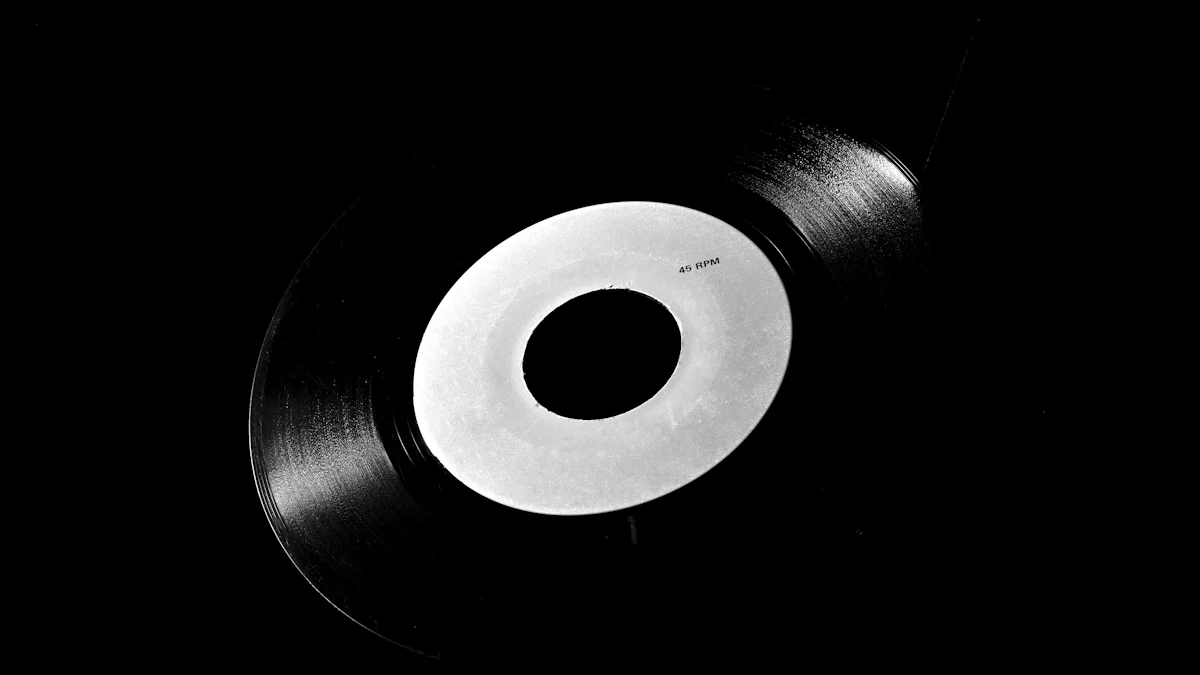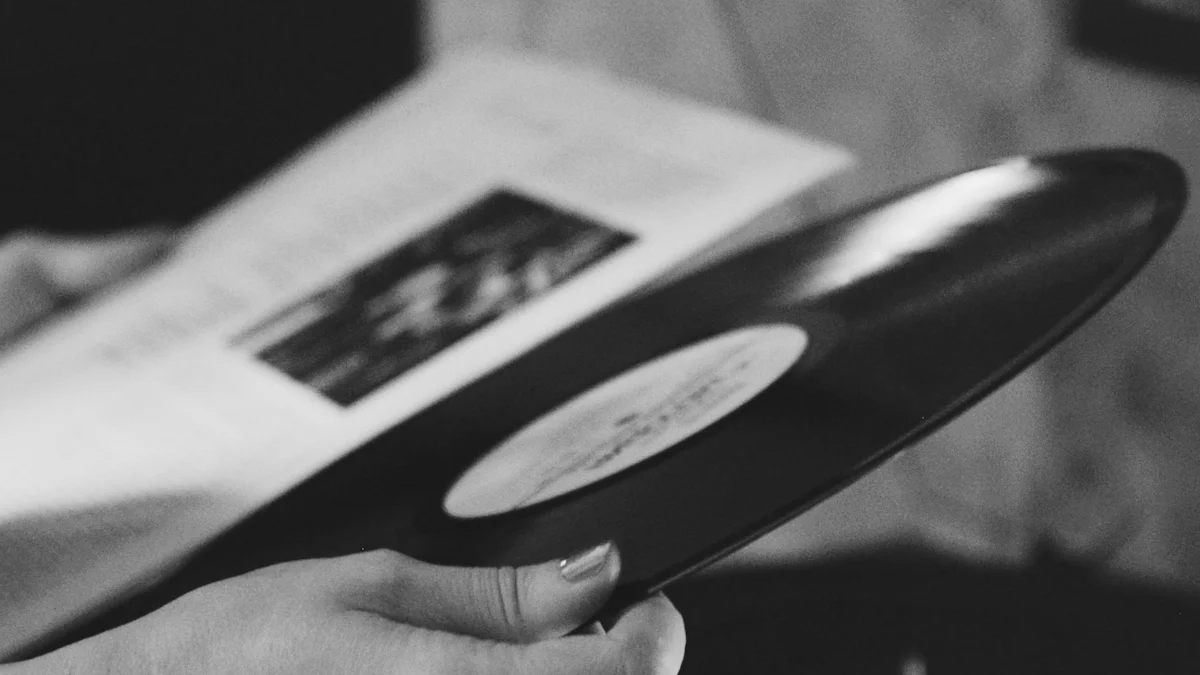Steps to Transfer Vinyl Without Transfer Paper

Did you know you don’t need transfer paper to move your vinyl designs? Painter’s tape works just as well and costs less. Its crepe paper backing makes it easy to tear into smaller pieces, which is especially helpful when learning how to cut vinyl without machine tools or working on textured or uneven surfaces. You can achieve clean, professional results without spending extra on specialized equipment. Whether you’re crafting at home or tackling a DIY project, this method keeps things simple and effective. Plus, you’ll love how painter’s tape gives you control over your design placement.
Key Takeaways
- Painter's tape is a cost-effective alternative to transfer paper for moving vinyl designs, providing better control over placement.
- Gather essential tools like scissors, a scraper, and a clean surface to ensure a smooth vinyl transfer process.
- Cut vinyl by hand with precision; take your time to avoid jagged edges and ensure a professional look.
- Align your design accurately on the surface by measuring and marking before applying the vinyl to avoid misplacement.
- Press the painter's tape firmly onto the vinyl to eliminate air bubbles and ensure a clean transfer.
- Practice on small designs first to build confidence and refine your technique before tackling larger projects.
- Always clean the surface before applying vinyl to enhance adhesion and ensure a long-lasting result.
Materials You’ll Need

Before you dive into transferring vinyl without transfer paper, gather the right tools. Having everything ready will make the process smoother and more enjoyable.
Essential Tools
Vinyl design or decal
Your vinyl design is the star of the show. Whether it’s a custom decal or a pre-made design, ensure it’s cleanly cut and ready for transfer.
Painter's tape
materials you'll need for this method. Its crepe paper backing makes it easy to tear into smaller pieces, perfect for covering your design.
Scissors or craft knife
You’ll need scissors or a craft knife to cut your vinyl and painter’s tape. A sharp blade ensures clean edges, which helps your design look professional.
Scraper or credit card
A scraper or even an old credit card works well to press the tape onto the vinyl. This tool helps remove air bubbles and ensures the tape adheres firmly to the design.
Surface for application
Pick a smooth, clean surface for your vinyl. Dust or grease can prevent the vinyl from sticking properly, so wipe the area down before starting. you'll need.
Optional Tools
Tweezers for intricate designs
If your design has small or detailed elements, tweezers can help you weed out excess vinyl. They give you better control and precision.
Ruler for alignment
A ruler helps you align your design perfectly on the surface. It’s especially useful for larger projects where symmetry matters.
Pro Tip: If you’re new to this, start with a simple design. Once you’re comfortable, move on to more intricate projects.
How to Cut Vinyl Without Machine
Cutting vinyl without a machine might seem tricky, but it’s simpler than you think. With the right tools and a steady hand, you can create beautiful designs without relying on expensive equipment. Let’s break it down step by step.
Cutting Vinyl by Hand
When you’re cutting vinyl by hand, precision is key. Follow these steps to ensure your design looks clean and professional:
-
Prepare Your Tools Grab a pair of sharp scissors or a craft knife. Dull blades can tear the vinyl, so make sure your tools are in good condition. A cutting mat can also help protect your workspace.
-
Outline Your Design If you’re working with a custom design, sketch it lightly onto the vinyl’s backing paper. This gives you a guide to follow as you cut. For pre-printed designs, simply cut along the edges.
-
Cut Slowly and Steadily Take your time as you cut. Move the scissors or knife in smooth, controlled motions. Avoid rushing, as jagged edges can ruin the final look of your design.
-
Check Your Work Once you’ve finished cutting, inspect the edges. Trim any uneven spots to keep the design neat. This step ensures your vinyl is ready for the next phase.
Pro Tip: If you’re new to learning how to cut vinyl without machine tools, start with simple shapes like circles or squares. These are easier to handle and build your confidence.
Weeding the Vinyl
Weeding is the process of removing the unwanted vinyl from your design. It’s an essential step that brings your artwork to life. Here’s how to do it effectively:
-
Start with the Outer Edges Begin by peeling away the excess vinyl around your design. Work slowly to avoid lifting any part of the actual design.
-
Focus on Small Details For intricate designs, use tweezers to remove tiny pieces of vinyl. This tool gives you better control and helps you avoid damaging the design.
-
Double-Check the Final Design Once you’ve removed all the excess vinyl, take a moment to review your work. Make sure every detail is intact and ready for transfer.
Pro Tip: Keep a small container nearby for the vinyl scraps. This keeps your workspace tidy and prevents sticky pieces from getting in the way.
Learning how to cut vinyl without machine tools opens up endless possibilities for your projects. With practice, you’ll master these techniques and create stunning designs that look just as good as machine-cut ones.
Preparing the Vinyl for Transfer
Getting your vinyl design ready for transfer is a crucial step. Proper alignment ensures your final project looks polished and professional. Let’s dive into how you can align your design with precision.
Aligning the Design
Accurate placement makes all the difference when transferring vinyl. Follow these steps to ensure your design is perfectly centered and aligned:
-
Measure the Surface
Start by measuring the surface where you’ll apply the vinyl. Use a ruler to determine the exact center or desired position. This helps you avoid off-center placement, which can ruin the overall look of your project. -
Position the Design
Place your vinyl design on the surface with the backing paper still attached. Adjust it until you’re satisfied with the placement. If you’re working on a larger project, consider using alignment tools like a laser guide for added accuracy. -
Mark the Placement
Lightly mark the edges of your design with a pencil or masking tape. These marks act as guides, ensuring the design stays in the right spot during the transfer process. Don’t worry—these marks can be easily erased or removed later.
Pro Tip: Always double-check your alignment before moving on. A few extra seconds here can save you from redoing the entire project.
- Secure the Design
Once aligned, secure the design temporarily with small pieces of painter’s tape. This keeps it in place while you prepare to transfer it. For intricate designs, use additional tape to hold everything steady.
By taking the time to align your design properly, you set yourself up for success. Whether you’re learning how to cut vinyl without machine tools or working on a pre-cut design, this step ensures your final result looks clean and professional.
Using Painter’s Tape as a Transfer Tool

Painter’s tape offers a simple and effective way to transfer vinyl designs without the need for specialized transfer paper. Its versatility and affordability make it a favorite among crafters. Let’s walk through how you can use painter’s tape to achieve professional-looking results.
Applying Painter’s Tape
To start, you’ll need to cover your vinyl design with painter’s tape. Follow these steps to ensure proper application:
-
Cut the Tape into Strips
Tear or cut strips of painter’s tape that are slightly longer than your design. The crepe paper backing makes it easy to handle and adjust as needed. If your design is large, work with smaller sections to maintain control. -
Place the Tape Over the Vinyl
Lay the strips of tape over your vinyl design. Overlap each strip slightly to ensure full coverage. This overlap prevents gaps and keeps the design intact during the transfer process. -
Check for Coverage
Once you’ve placed the tape, double-check that the entire design is covered. Missing spots can cause parts of the vinyl to stay behind when you lift it.
Pro Tip: Use lighter-grip painter’s tape for most projects. If you’re working on textured surfaces, consider a stronger tape for better adhesion.
Securing the Tape
After applying the tape, you’ll need to secure it firmly to the vinyl. This step ensures the design transfers smoothly without any mishaps.
-
Press the Tape Firmly
Use a scraper or an old credit card to press the tape onto the vinyl. Start from the center and work outward to push out any air bubbles. This creates a strong bond between the tape and the vinyl. -
Smooth Out Air Bubbles
Check for any remaining air bubbles under the tape. Smooth them out by applying gentle pressure with your scraper. A bubble-free surface ensures the vinyl sticks evenly to the tape. -
Test the Adhesion
Gently lift one corner of the tape to see if the vinyl adheres properly. If any part of the design stays behind, press the tape down again and repeat the process.
Expert Insight: According to crafting experts, painter’s tape works exceptionally well for small or intricate designs, such as names or thin lines. Its flexibility allows you to handle delicate details with ease.
By following these steps, you’ll set yourself up for a seamless transfer. Painter’s tape not only simplifies the process but also gives you greater control over your design placement. Whether you’re customizing a gift or creating home décor, this method ensures your project turns out beautifully.
Transferring the Vinyl to the Surface
Now comes the exciting part—transferring your vinyl design to its final destination. This step requires a steady hand and a bit of patience, but the results are worth it. Let’s break it down into simple steps.
Lifting the Vinyl
-
Peel the Tape Slowly
Start by gently peeling the painter’s tape away from the backing paper. Go slowly to avoid tearing the vinyl or leaving parts of the design behind. Keep an eye on the edges to ensure everything lifts cleanly. -
Check for Sticking Issues
As you lift, make sure all parts of the vinyl stick to the tape. If any section stays on the backing paper, press the tape back down and smooth it out with your scraper. This ensures the entire design transfers properly.
Pro Tip: Hold the tape at a low angle while peeling. This technique reduces the risk of tearing and gives you better control.
Positioning the Design
-
Place the Tape on the Surface
Carefully position the tape with the vinyl onto your chosen surface. Align it with the marks you made earlier for precise placement. Take your time to get it just right—this step determines how your final design will look. -
Press Down Firmly
Once the tape is in place, press it down firmly using your scraper or credit card. Start from the center and work outward to smooth out any air bubbles. This step helps the vinyl adhere securely to the surface. -
Double-Check the Edges
Run your fingers or scraper along the edges of the design. This ensures every part of the vinyl sticks evenly, especially if you’re working on a textured or uneven surface.
Did You Know? Painter’s tape works well on textured surfaces because of its crepe paper backing. It molds slightly to the surface, making it a versatile tool for various projects.
Removing the Tape
-
Peel the Tape Carefully
Begin peeling the painter’s tape away from the surface. Do this slowly and at a sharp angle to avoid lifting the vinyl. Watch closely to ensure the design stays in place as you remove the tape. -
Inspect the Design
After removing the tape, check your design for any areas that didn’t stick properly. If needed, press those sections down with your scraper to secure them. -
Final Touches
Smooth out the entire design one last time to eliminate any remaining air bubbles. This step gives your project a polished, professional finish.
Quick Tip: If you notice any small imperfections, don’t panic. Use your fingers or a scraper to fix them. Vinyl is forgiving and allows for minor adjustments.
By following these steps, you’ll successfully transfer your vinyl design without the need for expensive transfer paper. Painter’s tape not only saves money but also gives you more control over the process. Whether you’re decorating a mug, a wall, or a gift, this method ensures your design looks flawless.
Tips for Success
Work Slowly and Carefully
Take your time to avoid tearing the vinyl or misaligning the design.
Rushing through the process can lead to mistakes. When peeling, cutting, or aligning the vinyl, move at a steady pace. This helps you avoid tearing delicate parts of the design or placing it incorrectly. If you feel unsure, pause and double-check your work. A little patience goes a long way in achieving a flawless result.
Pro Tip: If you’re working with intricate designs, focus on one section at a time. Breaking the task into smaller steps makes it more manageable.
Test on a Small Area First
Practice on a small design before tackling larger projects.
If you’re new to transferring vinyl without transfer paper, start small. Choose a simple design or a small surface to practice your technique. This allows you to get comfortable with the tools and process before moving on to bigger projects. Testing on a small area also helps you identify any issues, like tape adhesion or surface compatibility, early on.
Quick Tip: Use leftover vinyl scraps for practice. This way, you won’t waste your main design while learning.
Clean the Surface
Ensure the surface is clean and dry for better adhesion.
A clean surface is essential for a successful vinyl transfer. Dust, grease, or moisture can prevent the vinyl from sticking properly. Before starting, wipe the surface with a lint-free cloth and a mild cleaner. Let it dry completely before applying the vinyl. This simple step ensures your design adheres smoothly and lasts longer.
Did You Know? Even invisible oils from your hands can affect adhesion. Handle the surface and vinyl carefully to avoid contamination.
By following these tips, you’ll set yourself up for success. Whether you’re a beginner or an experienced crafter, these small adjustments can make a big difference in the quality of your final project. Take your time, practice, and enjoy the process!
Transferring vinyl without transfer paper is not only simple but also budget-friendly. Painter’s tape proves to be a reliable alternative, offering flexibility and control over your designs. By following these steps, you can create stunning projects on various surfaces with ease. Whether you’re crafting for fun or working on a special gift, this method opens up endless possibilities. *Ran out of transfer tape? No problem!* Experiment with this technique and discover how creative you can get. The best part? You’ll save money while achieving professional-looking results. Now, it’s your turn to give it a try!
FAQ
Can I use painter’s tape for all types of vinyl?
Yes, painter’s tape works well with most adhesive vinyl types. It’s especially effective for standard and removable vinyl. However, for glitter or textured vinyl, you might need a stronger tape to ensure proper adhesion. Always test a small piece first to see how it performs with your specific vinyl.
Will painter’s tape damage my surface?
Painter’s tape is designed to be gentle on surfaces, so it usually won’t cause damage. It works well on smooth surfaces like glass, wood, or plastic. For delicate or painted surfaces, test the tape in an inconspicuous area to ensure it doesn’t leave residue or peel off paint.
Can I use this method for intricate designs?
Absolutely! Painter’s tape is versatile and works well for intricate designs. Use tweezers to handle small details during the weeding process. When applying the tape, overlap the strips slightly to keep the design intact. This ensures even the tiniest elements transfer smoothly.
What if the vinyl doesn’t stick to the surface?
If the vinyl doesn’t adhere, check the surface. Make sure it’s clean, dry, and free of dust or grease. Use a scraper to press the vinyl firmly onto the surface. If the issue persists, consider using a stronger adhesive vinyl for better results.
How do I avoid air bubbles during the transfer?
To prevent air bubbles, press the painter’s tape onto the vinyl using a scraper or credit card. Start from the center and work outward in smooth motions. When applying the vinyl to the surface, repeat this process to ensure a bubble-free finish.
Can I reuse painter’s tape for multiple transfers?
Reusing painter’s tape isn’t recommended. Once used, the tape loses its adhesive strength, which can affect the transfer quality. For best results, use fresh tape for each project to ensure a secure hold and clean transfer.
For what type of decals can I use this method?
This method works for a wide range of decals, from simple shapes to detailed designs. You can use it for wall art, mugs, signs, or even car decals. It’s a flexible technique that adapts to various projects, making it a great alternative to transfer paper.
Will this method work on curved surfaces?
Yes, but it requires extra care. For curved surfaces like mugs or bottles, cut the painter’s tape into smaller sections. This allows the tape to conform to the curve more easily. Press down firmly to ensure the vinyl adheres evenly without wrinkles.
How do I fix mistakes during the transfer?
If you notice misalignment or bubbles, don’t panic. Gently lift the vinyl using the edge of the painter’s tape and reposition it. Smooth out any imperfections with your scraper. Vinyl is forgiving, so minor adjustments are easy to make.
Can I use other tapes instead of painter’s tape?
Yes, masking tape or washi tape can also work as alternatives. However, painter’s tape is preferred because of its balance between adhesion and removability. Avoid tapes with strong adhesives, as they might damage your vinyl or surface. Always test before committing to a project.
See Also
Creating Stickers in Bulk Using a Cutting Machine
Utilizing a Vinyl Cutter for Effective Comparisons
Is the Cricut Machine Efficient for Cutting Vinyl?
